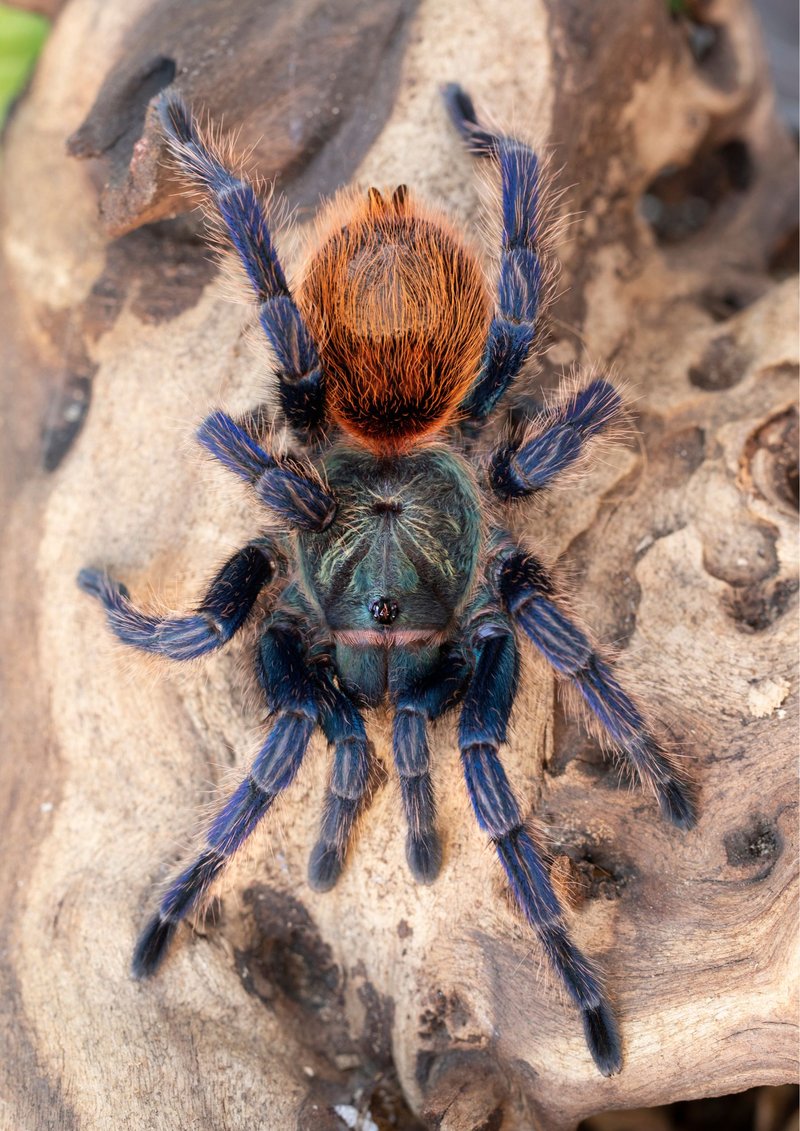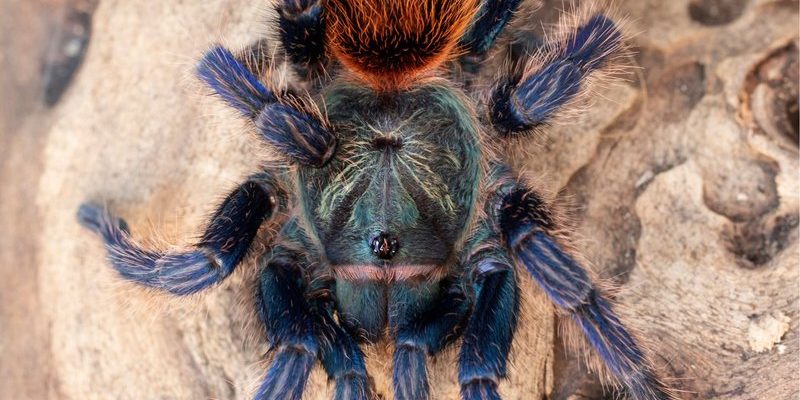
Owning a Greenbottle Blue Tarantula isn’t the same as having a dog or cat. Instead, think of it as welcoming a piece of the jungle into your living room. They don’t need daily walks but do require specific care to thrive. You might be wondering about their habitat needs, feeding habits, and overall temperament. Let’s dive into all that, so you can keep your new eight-legged friend happy and healthy.
Understanding the Greenbottle Blue Tarantula
The Greenbottle Blue Tarantula, known scientifically as Ceratogyrus meridionalis, is native to the dry regions of South America, particularly in the tropical forests of Bolivia. These tarantulas are known for their vibrant blue coloration, which comes from their shiny, iridescent hairs. They can grow to about 4 to 5 inches in body length and live up to 10 years in captivity with the right care.
These critters are semi-arboreal, meaning they sometimes live in trees but also thrive on the ground. They have a docile nature, making them suitable for beginners, but remember: like any wild creature, they can be a bit skittish. It’s essential to create an environment that mimics their natural habitat to help them feel safe.
Setting Up Their Habitat
Creating the perfect habitat for your Greenbottle Blue Tarantula is crucial for its well-being. Here’s a basic rundown to get you started.
Enclosure
When it comes to choosing an enclosure, a 20-gallon tank is a great choice. Ensure it has a secure lid to prevent any escape attempts. Tarantulas are surprisingly good climbers, so don’t underestimate them!
Substrate and Decor
For the substrate, use a mix of peat moss and coconut fiber, which allows for good moisture retention while also being safe for your pet. A depth of about 2 to 3 inches is ideal. You can add some hiding spots like cork bark or small caves where your tarantula can feel secure.
Temperature and Humidity
Temperature is key for a happy tarantula. Aim for a range of 75°F to 85°F during the day, dropping slightly at night. Humidity levels should sit between 60% and 70%. A simple way to maintain humidity is by lightly misting the enclosure a couple of times a week. Just be careful not to soak the substrate!
Feeding Your Greenbottle Blue Tarantula
Feeding your tarantula might seem intimidating, but it’s simpler than you might think. Here’s what you need to know.
Diet Basics
Greenbottle Blue Tarantulas are carnivorous and primarily feed on insects. Crickets, roaches, and mealworms are all great options. You can also occasionally offer them pinky mice for a treat, but this shouldn’t be a regular part of their diet.
Feeding Frequency
As a general guideline, juveniles should be fed every 3 to 4 days, while adults can be fed once a week. Always remove uneaten food after 24 hours to prevent any issues with mold or bacteria in their habitat.
Water Needs
Never underestimate the importance of water. A shallow dish with clean, fresh water should be provided at all times. Make sure it’s shallow enough that your tarantula can’t accidentally drown. If you don’t have a dish, you can sprinkle a little water on the substrate to keep humidity levels up.
Understanding Behavior and Temperament
Getting to know your Greenbottle Blue Tarantula’s behavior is vital. These spiders can be fascinating to observe, but their temperament can vary.
Social Interaction
Unlike dogs, tarantulas aren’t the social butterflies of the pet world. They don’t seek out human interaction and, in fact, can be quite shy. You can watch them from a distance, and they’ll likely respond to your presence by exploring their tank or hiding.
Handling Tips
If you’re considering handling your tarantula, think twice. While some people do handle them, it comes with risks. Tarantulas can be stressed by handling, which may lead to defensive behaviors, including biting or flicking hairs. If you do decide to handle, ensure you’re calm and gentle.
Common Health Issues
Like all pets, Greenbottle Blue Tarantulas can face health challenges. Here are a couple of common issues and what to look out for.
Molt Problems
Molting is a natural process for tarantulas where they shed their old exoskeleton. Sometimes, issues can arise. If you notice your tarantula stuck in a molt, it could be due to low humidity or temperature. Keep an eye on them during this process and ensure conditions are optimal.
Signs of Stress
You might see signs of stress, such as web-spinning or excessive hiding. If your tarantula is particularly skittish, check its environment. Ensure it feels safe and comfortable, with plenty of hiding spots and proper humidity levels.
Bringing a Greenbottle Blue Tarantula into your home can be an exciting journey. With their stunning appearance and intriguing behaviors, they offer a unique pet experience. Just remember to focus on creating the right habitat, providing proper nutrition, and being sensitive to their needs.
So, are you ready to welcome one of these beauties into your life? With a little time and effort, you’ll have a lovely eight-legged companion that adds a splash of color to your world!

